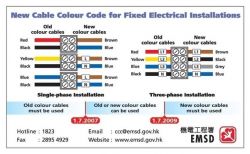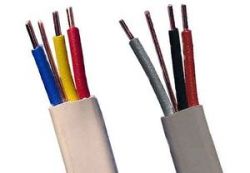Hello and welcome. I made the mistake of ordering a 4x1.5 flat cable recently. I needed a classic, for stair and cross switches .. Everything would be ok if I checked the colors before assembly (5 houses), and the opposite happened. So far I've ALWAYS used 5x1.5. I don't know what tempted me to 4x1.5. And the point is, of course, that in this wire there is yellow-green, brown, black and gray. Of course, I won't list them now, because it's a lot of wires. I plan to use gray as a neutral and mark it in blue with some T-shirt in all switches and lamp overhangs. Is this a terrible sin in your opinion? Finally, I also connect the whole thing, so it's not about me .. I mean the situation in the future, if another electrician will modify something, etc.. Tomasz.






